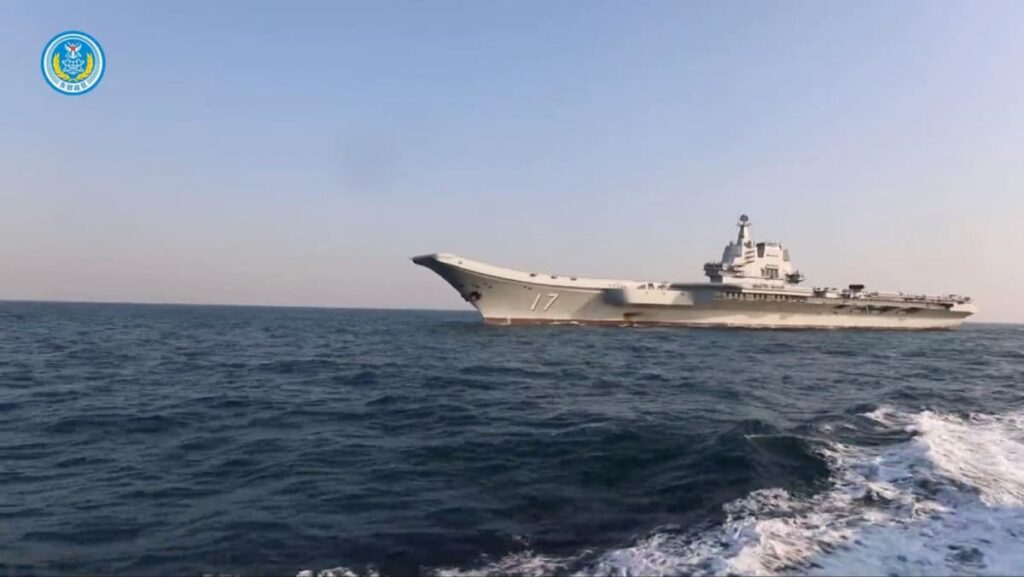PSYCHOLOGICAL INTIMIDATION
Particularly revealing was the release by the PLA Eastern Theatre Command of four military action posters, representing a comprehensive coercion strategy of “advancing”, “deterrence-containment”, “destruction-paralysis” and “lock-control”. The effort was psychological intimidation through show of force and the suggestion of encirclement.
This approach serves three objectives. First, it normalises substantial military activities in contested waters, gradually reshaping international expectations.
Zhang Chi of China’s National Defence University confirmed this strategy, stating the unnamed approach has become “normal practice”. Such framing indicates Beijing’s intention to normalise its military activities around Taiwan.
Second, it allows China to incrementally increase pressure without triggering crisis-level responses that specially named operations might provoke. Chinese state television explained that the initial activities were deliberately not labelled as part of “Strait Thunder-2025A” to demonstrate the armed forces’ ability to adapt to rapidly evolving combat situations.
Third, it supports a sovereignty narrative by characterising exercises as routine domestic security operations.
The comparison to the 1995 to 1996 Taiwan Strait Crisis is instructive. Those exercises, codenamed “Strait 961” and involving missile tests near Taiwan’s ports, were explicitly identified as extraordinary events. The current approach represents an important evolution – no longer framing military pressure as exceptional but as the ordinary state of affairs.
Particularly significant was the integration of simulated “inspection and capture” operations against vessels – blending aspects of maritime interdiction with conventional military operations in a way that suggests preparation for enforcing territorial claims through military means.
According to the PLA’s Eastern Theatre Command, the exercises focused on “identification and verification, warning and expulsion, and interception and detention” while testing troop capabilities in area control, joint blockade operations and precision strikes on key targets.
Read the full article here
